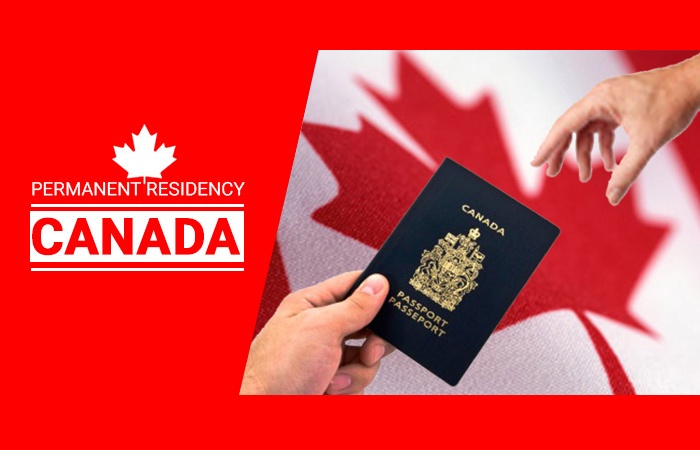
Canada’s Express Entry: How to Maximize Your Chances for Permanent Residency
Canada’s Express Entry system remains one of the most popular and efficient ways for skilled workers to immigrate to the country. With high demand and a competitive system, the Canadian government is offering multiple pathways for qualified candidates to gain permanent residency (PR). Here’s everything you need to know to navigate the Express Entry process and boost your chances of receiving an Invitation to Apply (ITA).
What is Express Entry?
Express Entry is an online system used by Immigration, Refugees, and Citizenship Canada (IRCC) to manage permanent residency applications for skilled workers. The system selects candidates through a points-based system known as the Comprehensive Ranking System (CRS). This ranking system awards points based on factors like age, education, work experience, language skills, and more. High-ranking candidates receive ITAs during regular draws, inviting them to apply for permanent residency.
Eligibility Requirements for Express Entry
To enter the Express Entry pool, applicants must qualify for one of the three immigration programs managed by the system:
1. Canadian Experience Class (CEC)
- Target Group: Skilled workers with Canadian work experience.
- Minimum Requirements:
- At least 1 year of skilled work experience in Canada within the past 3 years.
- Language proficiency: CLB 7 for TEER 0 or 1 jobs, and CLB 5 for TEER 2 or 3 jobs.
2. Federal Skilled Worker Program (FSWP)
- Target Group: Applicants with foreign work experience.
- Minimum Requirements:
- At least 1 year of continuous, full-time skilled work experience in the last 10 years.
- Language proficiency: CLB 7 in all areas (listening, speaking, reading, and writing).
3. Federal Skilled Trades Program (FSTP)
- Target Group: Skilled tradespeople, particularly those with non-Canadian experience.
- Minimum Requirements:
- At least 2 years of full-time work experience in a skilled trade within the last 5 years.
- Language proficiency: CLB 5 for speaking and listening, and CLB 4 for reading and writing.
Meeting the basic eligibility criteria for one of these programs is the first step in becoming a candidate for Express Entry.
Boosting Your CRS Score: A Path to Success
The Comprehensive Ranking System (CRS) is the key to receiving an Invitation to Apply (ITA). Candidates are ranked based on their CRS score, which is determined by various factors including language ability, age, education, work experience, and adaptability. Here are some strategies for increasing your CRS score:
1. Improve Your Language Skills
Language proficiency is one of the most important factors in the CRS. You can earn up to 260 points for language proficiency, depending on whether you take the IELTS or CELPIP test for English, or the TEF test for French.
- A score of CLB 9 or higher across all four language abilities (speaking, reading, writing, listening) will give you the maximum CRS points.
- French Proficiency can further increase your score by up to 50 points, especially if you also excel in English.
2. Gain More Work Experience
Work experience in Canada is highly valuable. Canadian work experience is awarded more points than foreign experience, with up to 80 CRS points available under the core human capital factors for those with Canadian work experience. Additionally, combining Canadian work experience with a post-secondary degree can boost your score by up to 50 points under the Skill Transferability Factors.
Foreign work experience combined with either strong language skills or Canadian work experience can also add 50 points to your CRS score.
3. Obtain a Provincial Nomination
Provincial Nominee Programs (PNPs) are another effective way to increase your chances of receiving an ITA. If you receive a provincial nomination, you are awarded 600 CRS points, which virtually guarantees an ITA in the next draw. Provinces and territories in Canada have various streams under their PNPs, and some are specifically tailored for skilled workers, entrepreneurs, or individuals with specific language skills.
4. Secure a Valid Job Offer
If you have a job offer from a Canadian employer, you could earn additional CRS points—up to 200 points for certain positions. However, your job offer must meet specific criteria, including:
- Full-time employment (at least 30 hours per week).
- Non-seasonal and continuous job.
- Skilled occupation under NOC TEER 0, 1, 2, or 3.
The job offer must also be supported by a Labour Market Impact Assessment (LMIA) or be LMIA-exempt.
After Receiving an Invitation to Apply (ITA)
Once you receive an ITA, you have 60 days to submit your permanent residency application. Here’s a step-by-step breakdown of the process:
- Accept or Decline the ITA: Decide whether to proceed with your application.
- Gather Supporting Documents: These include police certificates, medical exams, proof of funds, and biometrics.
- Submit Your Application: Complete the online form and upload all required documents.
- Pay the Fees: Pay the Application Processing Fee (APF) and the Right of Permanent Residence Fee (RPRF).
- Biometrics: If required, provide fingerprints and photographs.
- Application Processing: Immigration Canada will process your application, usually within six months. Additional documents may be requested.
- Confirmation of Permanent Residence (COPR): If your application is approved, you will receive your COPR and a permanent resident visa (if applicable).
- Land in Canada: Upon arrival, you will officially become a Canadian permanent resident.
Required Settlement Funds for FSWP and FSTP Applicants
Applicants under the Federal Skilled Worker Program (FSWP) and Federal Skilled Trades Program (FSTP) must prove that they have sufficient funds to support themselves and their family upon arrival in Canada. The required amount varies by family size and is updated annually. As of the latest update, the amounts are as follows:
- 1 person: $14,690
- 2 people: $18,288
- 3 people: $22,483
- 4 people: $27,297
- Each additional family member: $3,958
The Canadian Experience Class (CEC) does not require proof of funds.
What if You Don’t Qualify for Express Entry?
Not all candidates will be eligible for Express Entry, but Canada offers alternative pathways to permanent residency:
Provincial Nominee Programs (PNPs)
Each province and territory in Canada, except for Quebec and Nunavut, operates its own PNP. Some provinces have streams that allow foreign nationals to apply directly for PR, and securing a nomination can provide significant advantages in the immigration process.
The Atlantic Immigration Program (AIP)
The AIP is designed for skilled workers and international graduates with job offers from employers in one of Canada’s Atlantic provinces: New Brunswick, Newfoundland and Labrador, Nova Scotia, and Prince Edward Island. Nominees in the AIP are eligible for a two-year work permit before applying for PR.
Federal Immigration Pilots
There are various federal immigration pilot programs designed for specific industries or groups. These include:
- The Francophone Community Immigration Pilot: For French-speaking workers in designated communities outside Quebec.
- The Agri-Food Pilot: For experienced workers in specific agriculture and food sectors.
- The Rural Community Immigration Pilot: For skilled workers and international graduates who want to live in rural communities.
Quebec: A Special Case
If you are interested in settling in Quebec, you cannot apply through Express Entry. Instead, you must apply through the Quebec Selection Certificate (CSQ) process. Quebec has its own immigration programs, including the Skilled Worker Program (PSTQ), Quebec Experience Program (PEQ), and business programs for investors and entrepreneurs.
Conclusion
Navigating the Express Entry system may seem complex, but by improving your CRS score through better language skills, more work experience, or a provincial nomination, you can increase your chances of securing a permanent residency invitation. With the right preparation and knowledge of the requirements, you’ll be one step closer to making Canada your new home.
For a consultation about Immigration options, reach out to the CAD IMMIGRATION today!





